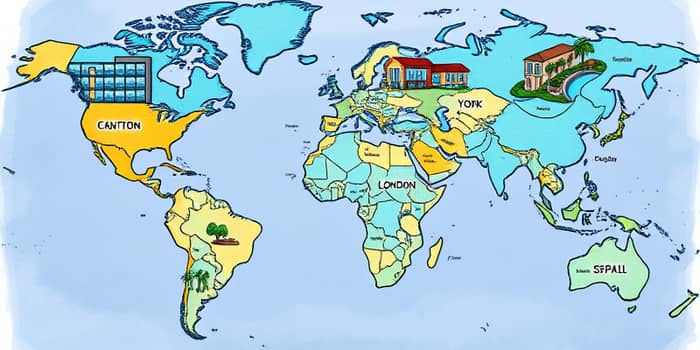
In 2025, the global luxury real estate landscape is experiencing distinct shifts across major markets. From coastal Californian estates to urban European penthouses, high-end properties are following unique trajectories driven by economic conditions, lifestyle preferences, and geopolitical factors.
Several overarching forces are creating varied outcomes in luxury housing markets worldwide. Affordability, supply constraints, and currency movements all play pivotal roles in shaping prices and demand.
The following table summarizes the key characteristics and trends across major luxury markets this year. Each region tells a different story, reflecting local drivers and global influences.
Across the United States, average luxury home values rose 2.7% year-over-year, outpacing the broader market’s 1.4% gain. Yet beneath this average lie stark contrasts between regions.
In major metros like San Jose, Los Angeles, and San Francisco, luxury properties command nearly double the national average, with median prices in San Jose approaching $6 million. Meanwhile, cities such as Washington, DC (+3.8%) and Philadelphia (+3.5%) continue to record healthy gains as local economies strengthen and inventory remains scarce.
Miami bucks most trends with a 0.5% year-over-year decline. Despite its reputation, the city’s luxury segment faces steep affordability challenges, evidenced by a price-to-income ratio of 6.6 compared to the national 3.95. High demand collided with slower post-pandemic migration, resulting in tight supply driving price increases in certain submarkets but overall softening values.
In Europe, London’s luxury market is forecast to grow 2% in the short term, with stronger gains expected over the next five years. The city’s resilience is tied to its global finance status and sustained international interest. Paris, by contrast, is experiencing a renaissance fueled by a weaker euro, drawing buyers from the UK and US and pushing prices up by an estimated 2.5%.
Across Southern Europe, Portugal and Spain have emerged as popular destinations for luxury investors seeking value-rich alternatives. Coastal villas in the Algarve and Balearic hotspots in Mallorca are enjoying rising inquiries from North American and British purchasers.
Meanwhile, Dubai’s prime sector is undergoing robust growth, with prices up 5% despite listings plunging by over half. The tight supply of waterfront apartments and desert estates in premier neighborhoods underscores the emirate’s continuing allure for high-net-worth individuals.
Buyers in 2025 are prioritizing features that blend comfort, security, and wellness. Preferences have shifted notably in the wake of remote work and lifestyle reevaluations.
Sustainability has moved from a niche feature to an expectation in luxury real estate. Buyers demand energy-efficient systems and eco-friendly materials like solar panels, living roofs, and reclaimed woods. Smart home integrations are now standard, with advanced climate controls, automated security, and AI-driven environmental management.
Developers are responding with properties that boast cutting-edge renewable energy installations, water recycling systems, and net-zero energy certifications. These measures not only reduce environmental impact but also enhance long-term value in a market that increasingly rewards innovative green design.
As we navigate 2025, luxury real estate markets will continue to diverge, shaped by local conditions and global trends. Buyers and investors must remain attuned to regional nuances—from currency advantages in Europe to supply-driven spikes in the Middle East—to make informed decisions. Ultimately, the world’s most exclusive properties are becoming ever more specialized, reflecting both the diversifying aspirations of high-net-worth buyers and the evolving economic landscape.
References













